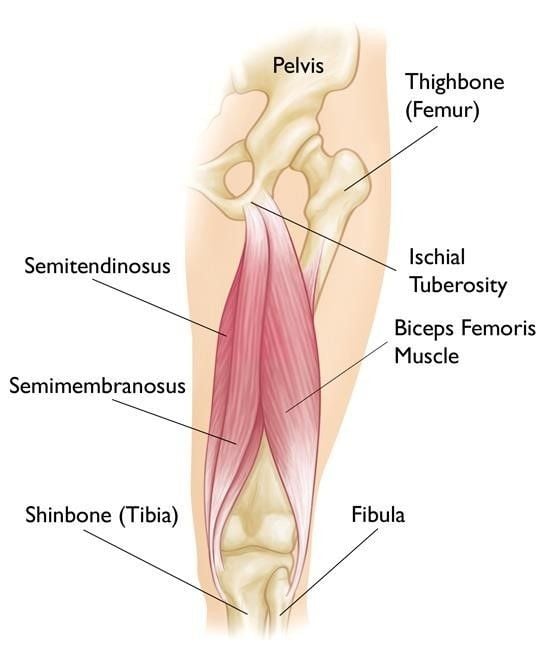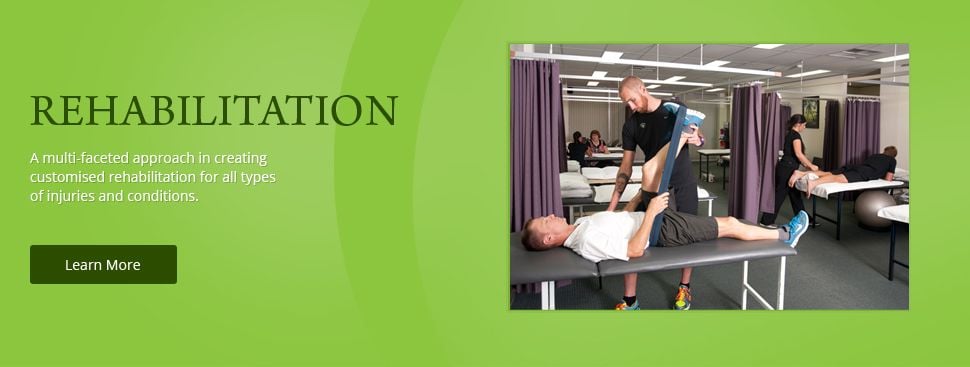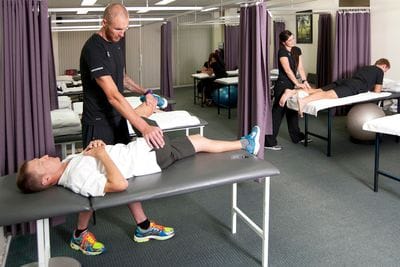Exercise Physiology
Individualised and structured exercise programs, specialised in return from injury, athletes or individuals wanting to improve performance, strength, power, speed, endurance, flexibility and/or overall lifestyle.

Hamstring Strains
)
Most people, especially those involved with sports like soccer or AFL, will have experienced or know someone who has strained their "hammy". A hamstring strain refers to an injury where one or more of the muscles that make up the hamstring are stretched beyond their physical capacity, causing mini tears within the muscle fibres. The hamstring itself is actually made of 3 muscles, starting from the bottom of the pelvis and attaching to just below the back of the knee, thus the strain may be either to one or all of them depending on the nature of the injury.
The hamstring crosses two joints, both the hip and knee, as a result its function will vary from being a stabilising muscle to a moving muscle. Thus, the hamstring has a major role in sports when it comes to high velocity movements such as sprinting or repetitive kicking.
Predisposing factors or causes to straining the hammy include reduced mobility of the muscle tissue, muscular strength imbalances between the quads and hamstrings, poor core stability and a previous history of hamstring injuries. Poor posture and positioning of the pelvis may also predispose the hamstring to being overstretched in sports.
Hamstring strains can result in sharp rapid pain at the time of injury and possible popping sounds may occur with the injury. It will usually feel like something has been torn at the back of your thigh following the injury and the area will begin to feel quite bruised and tender. Usually bending and straightening the knee begins to hurt on the following day or same day.
Hamstring strains are graded by physios from grade 1-3, with the highest grade being the worst form of the injury. Grade 3 tears are rarer and require more complicated treatment and rehab programs. Most hammy strains are grades 1-2, with movement at the leg being restricted and strength of the leg being compromised.
In the first few days after the injury, light, pain-free stretches, as well as ice treatments are great to help manage the swelling, pain and damage. After those first few days, physio treatment is going to be most beneficial and required to help your return to play. A thorough assessment is completed by your Physio and a rehab program can begin which consists of both hands-on treatments and specific exercise regime to get back to pre-injury levels.
If hamstring strains are left to heal on their own secondary problems do commonly arise and hence early rehabilitation through physiotherapy intervention is always beneficial following the injury.


)
)
)




